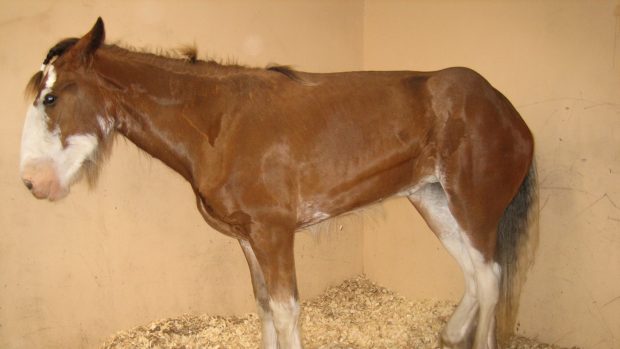Equine grass sickness (EGS) is a disease of the nerves that co-ordinate intestinal movement and peristalsis. Common signs of the condition include distension of small intestine and impaction of large intestine with food material; an increased heart rate and intermittent “patchy” sweating, often on the neck and flanks; and profuse salivation. The condition is often fatal and currently there is no cure.
Research has shown that when a horse on particular premises is diagnosed with the disease, there is an increased risk of other horses nearby also suffering the disease for a period of approximately one month. The radius of increased risk is at least 10km but there is likely to be a gradient of risk; risk is highest on the affected premises and decreases with distance from those premises.
The scientific evidence suggests the following actions will minimise the risk of further horses being affected:
- Avoid abrupt changes in management and diet. It is tempting to move horses to a different pasture or to stable them after a positive diagnosis of EGS. There is no evidence that this is protective and plenty of evidence to suggest that dietary change increases the risk of EGS.
- Slowly, over the course of two to three weeks, introduce some supplementary forage (hay or haylage). Don’t do this suddenly for the reason given above.
- Be reassured that older horses and those who survive more than a month following the diagnosis of a case of EGS are likely to be very resistant to the disease.
If your horse is stabled on “high risk” premises — those that have recently given rise to a case of EGS, the following advice will help minimise the chance of your horse getting EGS.
- Avoid grazing young horses (less than seven years old) on high-risk premises if possible. Young horses are most at risk from EGS. Older horses are relatively resistant to the disease.
- Avoid changes in management during the high-risk spring period (April-June). This includes moving horses to different pastures, buying new horses from other areas and changes in diet. Change in diet is one of the biggest risk factors for EGS.
- Supplement the diet of horses “at risk” with extra hay or haylage throughout the spring.
- Avoid digging up or otherwise disturbing the soil. Don’t dig holes for fence posts, trenches for drains or foundations for buildings in the pastures of grazing horses. Mechanical removal of droppings is also best avoided.
- Avoid the intensive use of worming drugs in the months leading up to the high-risk spring period. Worm control is obviously important, but the over-use of worming drugs may increase the risk of EGS. Talk to your vet about getting the balance right.
- Don’t worry about ploughing and re-seeding pasture or about the use of nitrogen fertilizer. Neither of these has been demonstrated to change the risk of EGS.




